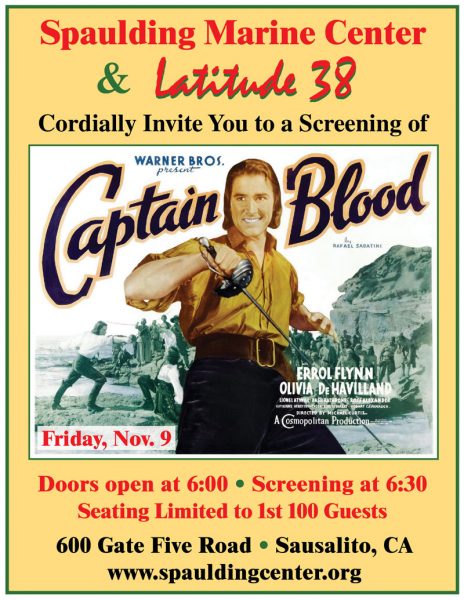
New Latitude Still on Newsprint
Mark from Rubicon Yachts said a customer came in and told him that the October issue was the last month for the printed edition of Latitude 38, and that Latitude was going entirely online. “Maybe the ad guy is the last to know,” quipped our ‘ad guy’, Mitch Perkins. We don’t know how this rumor got started, but, although we have a shiny new website, Latitude 38 still comes out on not-at-all-shiny newsprint. Here you see the November issue as proof.
In October, we welcomed the REI stores in San Carlos and Corte Madera, and Wind over Water in Burlingame as new distributors.
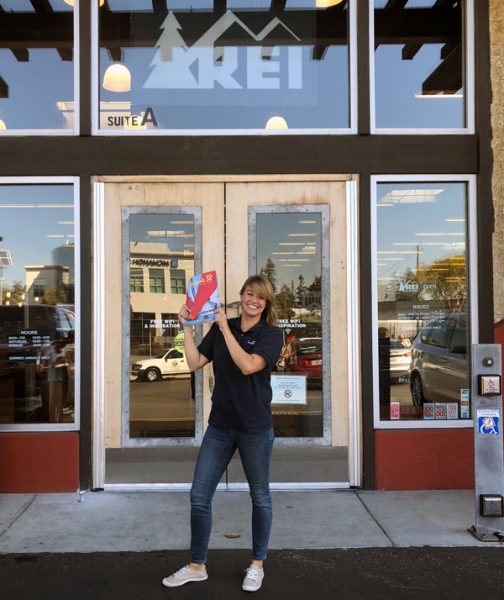
Not only is Latitude still in print, but this is one of our favorite issues ever (but, to be fair — and as stated previously — they’re all our favorite issue). This month, we join contributor Scott Sadil on an open-boat adventure sailing with whales in Baja, take a look at the Bay Area’s season champs, find out what it takes to be a tall-ship skipper (spoiler alert: there is no easy answer), have a sampling of Baja Ha-Ha participants, and take a look at some of the most popular sailing apps out there.
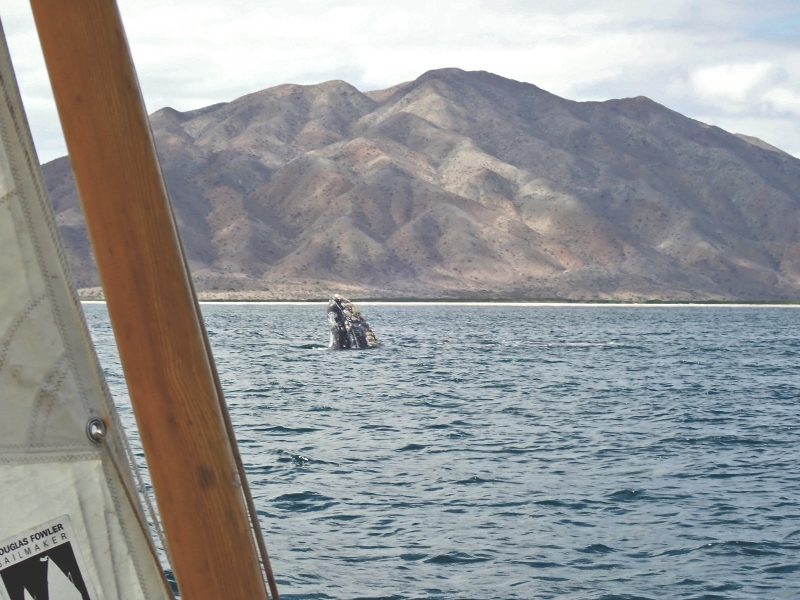
But wait, there’s more.
Here’s an excerpt from one of our favorite Letters of the month: “Since completing my solo circumnavigation a year and a half ago, I have considered numerous paths, but none have captured me. I thought I might start a business in Panama, or build a house, or go to cooking school, or meditate, or immerse myself in yoga. I considered land travel. I had a love affair. I looked at maps. I looked at the globe. During the circumnavigation I had a purpose and knew exactly what I was doing. There were long passages: 44 days, 63 days, and 66 days when I was alone offshore. I felt so connected with what I was doing. I ate vegan and drank green tea. The solo circumnavigation was a nicely executed masterpiece, and all of my actions and ideas since pale in comparison. I have no idea of what to do next. This is a wall one comes up against.”
We also have a letter from Grady Meadows about a rescue and reunion.
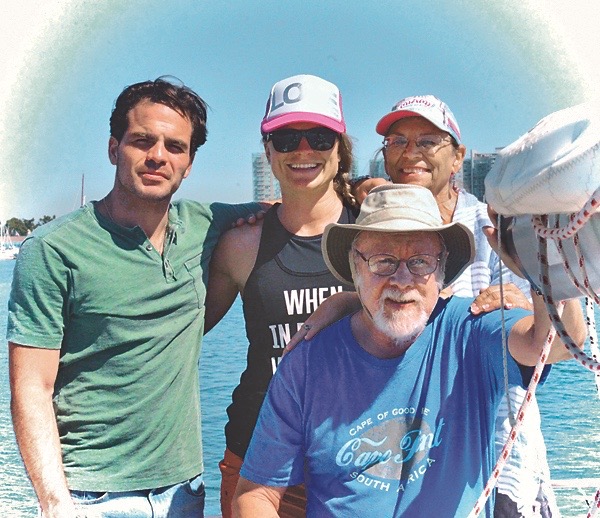
In this month’s Lips, we have the story behind one of the oddest Caption Contest(!)s we’ve ever seen, offer some etymology of the word ‘groggy’ (spoiler alert: it comes from booze), and have an excerpt from a New York Times story about a new way to combat barnacles on boats and ships. Lastly, but by no means least-ly, we have a Sightings from reader Brooks Townes about how the city of Port Townsend, Washington, managed to fight off gentrification of its working waterfront.
We hope you enjoy the November 2018 Latitude as much as we enjoyed making it and holding its freshly printed pages in our hot little hands. And coming soon, the December issue.
It’s already looking to be one of our favorite issues ever.
The Route du Rhum Spectacle
Perhaps the biggest race most Americans have never heard of is about to get underway in France. A spectacle like no other, the quadrennial Route du Rhum singlehanded transatlantic race begins this Sunday, November 4, in Saint-Malo, a Breton port city on France’s north coast. More than 120 intrepid skippers will take the start of this marathon race across the Atlantic, which spans some 3,542 miles from Saint-Malo to Pointe-à-Pitre, Guadaloupe, in the Caribbean. After reviewing this year’s race village statistics and anticipated crowd draw for the start, we can’t think of a single sailing event on Earth that will turn out as many spectators in one place at one time. More than half a million fans are expected to turn up, rain or shine, to watch the departure of the 11th Route du Rhum, with around 2 million visiting the village in total.
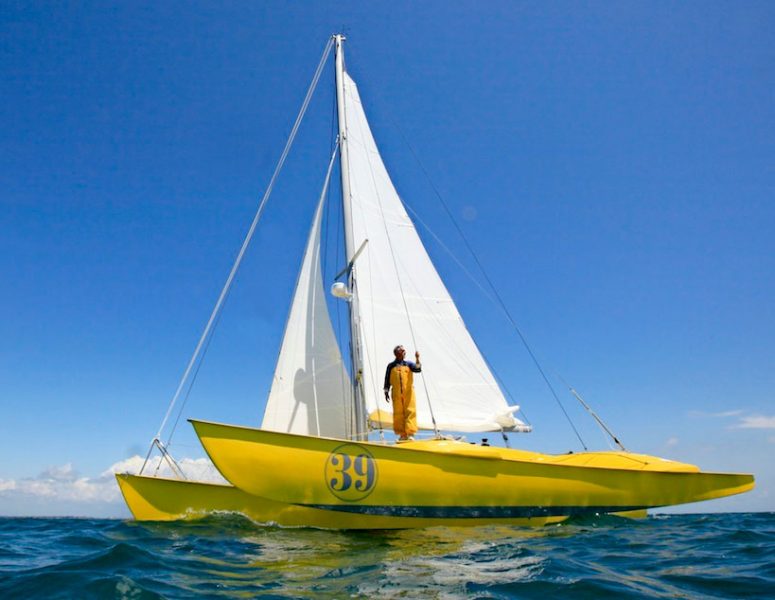
The race seems to get bigger and better; in 2018 the 123 boats registered have shattered existing records. By far the largest division in the race, some 54 Class 40s have entered, including several non-French skippers and even one American. While the Class 40 division will likely offer the best competition, the two divisions that are likely to see the lion’s share of media coverage are the Ultime trimarans and the IMOCA 60s. With two classes that are on the forefront of high-performance sailing and foil development, we can’t recall a more highly anticipated battle than the ones we are about to witness.
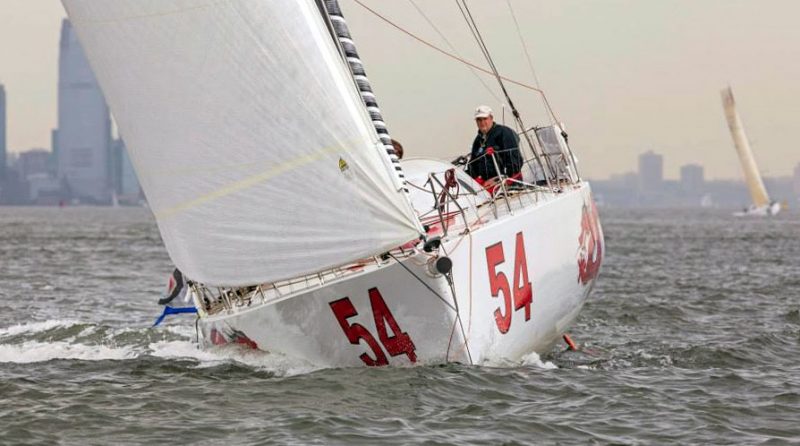
In the Ultime category — reserved for unlimited maxi-multihulls — François Gabart and his now fully foiling trimaran MACIF have to be the odds-on favorite to win. After shattering the solo round-the-world record (and very nearly besting the crewed record), Gabart returns with a boat that has been extensively modified and is now even faster. For an English-language video of Gabart sailing MACIF with Jimmy Spithill, see www.youtube.com/watch?v=O2PJQj7MA9o.
Gabart will have his work cut out for him as both Armel le Cléac’h on Banque Populaire IX and Seb Josse on Gitana 17 are on the line with their brand-new foiling monsters. The boat that has won the last two Route du Rhums — formerly as Groupama 3 and then Banque Populaire VII — is back this time in the hands of Francis Joyon and known as IDEC Sport. Many Latitude readers will remember this boat from its days as Lending Club 2, when it was sailing all over San Francisco Bay at close to 40 knots. She has now been modified to foil as well.
In the premier monohull division, 20 IMOCA 60s will be on the line, including a handful of new builds such as Jeremie Beyou’s revolutionary new Charal, whose high-flying antics and blistering speed runs have earned the three-time Figaro winner plenty of press coverage. There is also a Multi 50 division (trimarans) and a handicap (Rhum) division for monohulls and multihulls.
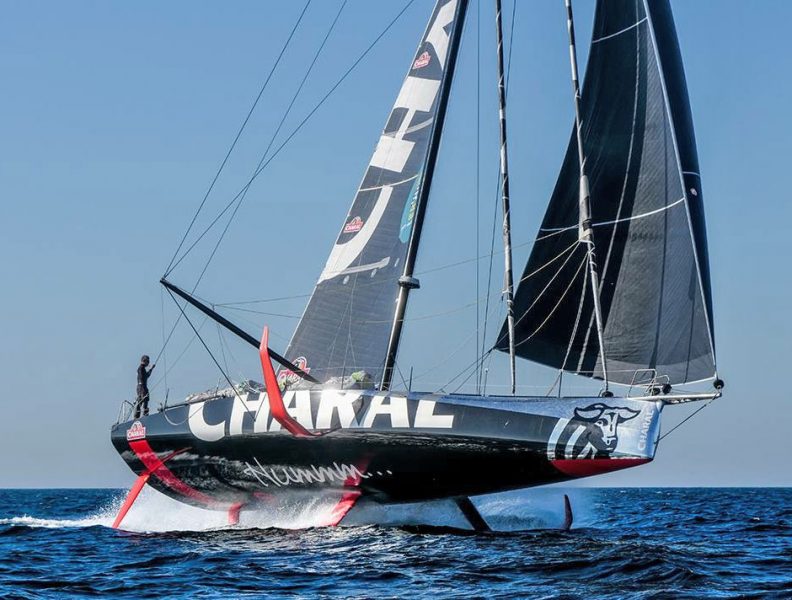
For more, see www.routedurhum.com/en, or compete in the virtual regatta at www.virtualregatta.com/en/index_vroffshore.php.
Ad: Movie Night at Spaulding: Captain Blood
News Nuggets
Here are some news nuggets for your Friday:
Coast Guard Comes to Aid of Diabetic Sailor off Eureka
On Wednesday, the Coast Guard came to the assistance of a sailor onboard a 29-ft sailboat off Patrick’s Point, near Trinidad, California, just north of Eureka. The sailor, described as a 55-year-old man, radioed the Coast Guard around 3 p.m. and said that he was experiencing symptoms of hypoglycemia. The man was singlehanding and did not have his medication for diabetes, according to a Coast Guard press release.
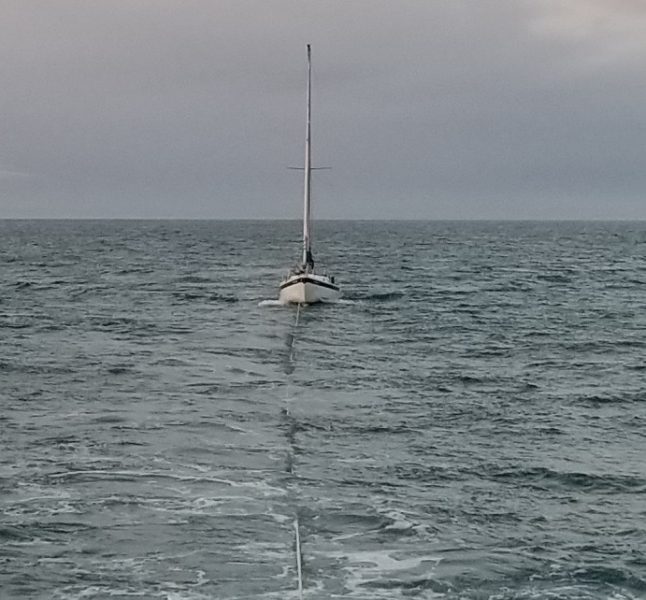
The Coast Guard stayed in radio contact with the sailor, and eventually delivered glucose gel to him. “After the man’s condition stabilized, he remained on his sailboat while the Coast Guard crew towed him to Woodley Island Marina around 9 p.m.,” a Coast Guard press release said.
Classy’s Acting Sassy, and Other Website News
We want to thank all of our readers who let us know they were having problems uploading photos for their Classy Classified ads on our new website. We are updating the site in stages, and a few glitches have popped up as we go. We can only imagine that this may have frustrated a few people who tried to run a classified for the December issue. Don’t worry, the problem is now fixed, and you have until November 15 to create your ad.
We also had a few people ask if they can still download a PDF of Latitude online. The answer is an emphatic YES, but the navigation to do so might be a little different. Here’s how you do it:
First: Go to www.latitude38.com, then click on the on the right-hand corner of the magazine, where it says “READ INSIDE.” (Note, if you don’t click on the right hand corner — which will “peel” away as you hover over it with your mouse — you’ll be taken to the contents page, where you can read individual features).
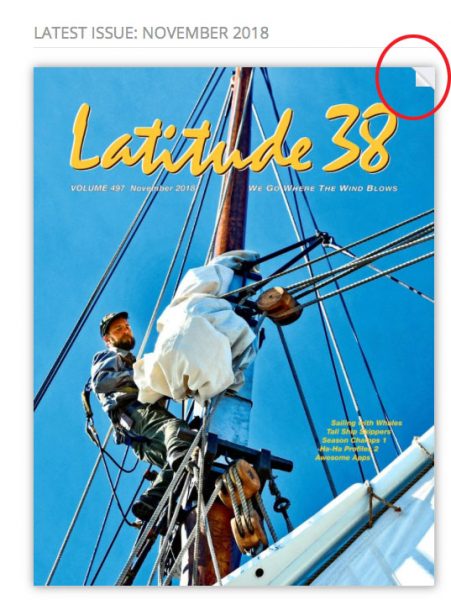
Once you’ve clicked on READ INSIDE, you’ll then navigate to a different page, where you’ll see a download arrow on the top left of your screen. Click on that, and POOF, you’ve just downloaded a PDF.
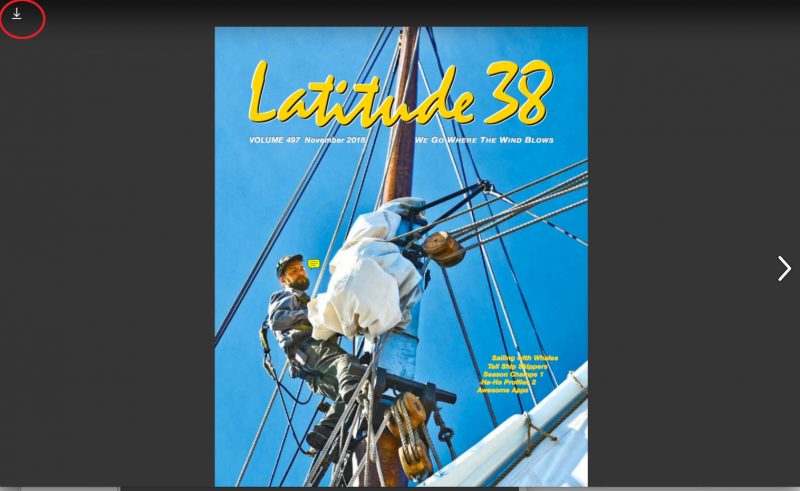
And just to make things interesting, if you happen to navigate into “issuu,” where you can read the magazine online, fear not! You can still download the magazine from there.
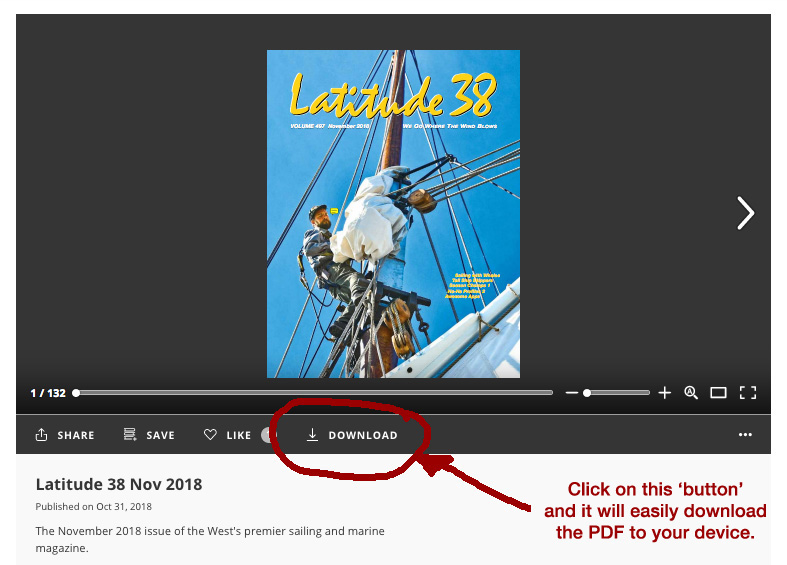
An ‘Old’ New 60-ft Monohull Record
The World Sailing Speed Record Council recently ratified Englishman Alex Thomson’s 24-hour 60-ft-monohull speed record. Between July 19 and 20, Thomson’s IMOCA 60 Hugo Boss — which was fully crewed at the time — traveled 539.71 nautical miles while sailing between New York and the UK. This summer’s run broke Thomson’s previous record, set in 2017, by 2.9 nautical miles.
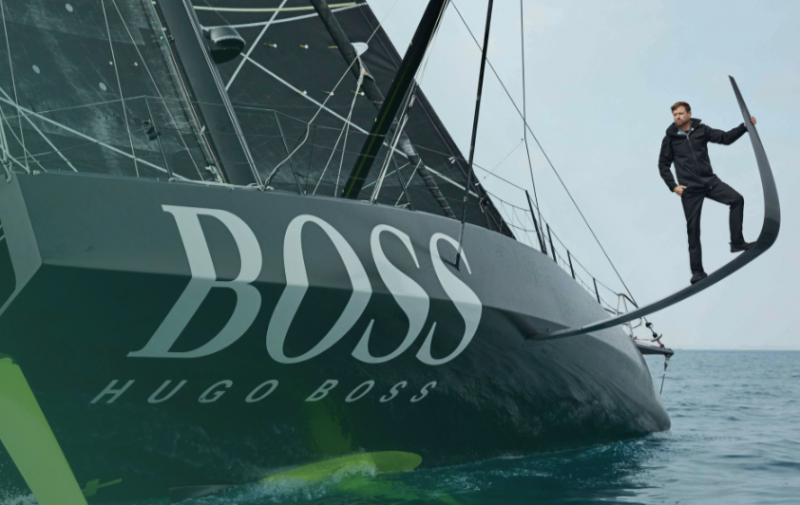
Reader and Baja Ha-Ha veteran Roger Briggs offered this perspective: “I just saw that Alex Thomson set a new monohull 24-hour record with an average speed of 22.5 knots. For perspective: With the Ha-Ha going down to Bahia Santa Maria in about five days of sailing time, Hugo Boss would have made it in just over one day, or 26.7 hours. Oh my!”
Joke of the Week
Two sailors walk into a bar . . . And say:
“OWWW! Gosh, OWWW! I did not see that bar there? That’s gonna leave a mark.”
Great Pumpkin Trivia Quiz Solution
On Monday we challenged you to test your nautical knowledge by playing along with Richmond Yacht Club’s Great Pumpkin Regatta trivia quiz. As promised, today we provide the solution. (We’ve abbreviated the introductions to each question; for the complete text, see Monday’s story.) Correct answers are shown in bold.
The British Golden Globe Race could not be started in Plymouth or Portsmouth, England, but was welcomed by the French port of Les Sables d’Olonne.
Why was the July 1, 2018 race start switched to France?
A. English Channel was blocked by an oil spill
B. Plymouth was not interested in hosting.
C. The race village and infrastructure is already in France.
D. British leaving from the European Union
In 1803, Marc Isambard Brunel patented 6, multi-task, metal machines, powered by the new steam engine, that could cut, shape, chamber and drill so precisely that any and all parts produced could be interchangeable. Over 1000 of these items were required for each ship built in that era. These machines were in use until 1965 and now are in the Maritime Museum.
What marine item did these British machines make?
A, dead eyes
B. belaying pins
C. pulley blocks
D. turnbuckles
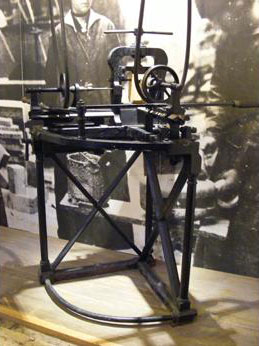
In the 2017-2018 Volvo Ocean Race, the skipper of “Vestas-11th Hour Racing”, was Charlie Enright. What was Charlie’s first major ocean race and on what boat?
A. Newport to Bermuda, ‘Shockwave’ 2006
B. Marion to Bermuda, ‘Bella Mente’ 2007
C. Los Angeles to Hawaii, ‘Morning Light‘ 2007
D. Newport to Britain, ‘SpeedBoat’ 2008
In 2015 the first winner of the race to Alaska, “R2AK”, Al Hughes returned the $10,000 first place prize money, as seed money, to make sure the race would be run again in 2016. In 2018 the womens’ team, “First Federal Sail Like A Girl”, sailing a Melges 32′ won the $10,000 prize money.
What did the women do with the prize money‘?
A. Stayed with tradition and returned the $10,000.
B. Shared the prize with their sponsor First Federal.
C. Used the money to pay off expenses
D. Donated it to Breast Cancer research
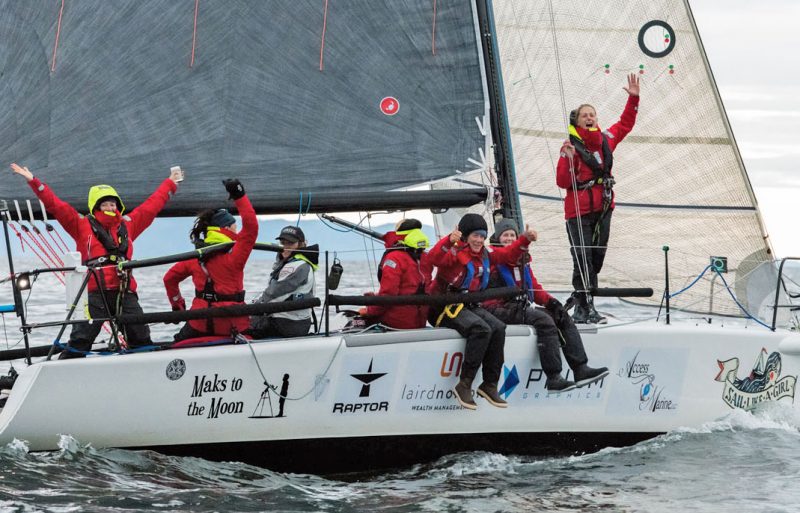
This British Admiral has been credited with the expression “Cast-a-Blind-Eye” for “willfully ignoring undesirable information”. During the Napoleonic Wars he was wounded 4 times – including the loss of one eye. When handed a single eye spyglass, to observe distant flags that were to signal orders he did not want to follow, he raised the lens to his bad eye and proclaimed the flags were not visible. He went on with the battle and established England as the superior naval power.
Who was this Admiral?
A. Lord Nelson
B. George Montagu
C. Captain William Bligh
D. Adam Duncan
“R2AK” starts in Port Townsend, on the North-East corner of the Olympic Peninsula of Washington State. In the late 1800’s Port Townsend was a “boom-town” with many beautiful Victorian houses and businesses built along the waterfront. By 1906 it was almost a ghost-town. San Francisco Bay’s Single Handed Sailor, Rob MacFarland III’s his Grandfather Robert tried to save the town but the company he was chairman of went out of business.
What was the reason for Port Townsend’s decline?
A. Was no longer the official US Port of entry
B. The towns’ saw mill went out of business
C. San Francisco’s earthquake happened in April
D.The trans-continental railroad stopped in Tacoma
When the $10,000 prize is given to the winner of the R2AK, it is presented to the winner in what form?
A. Big media-display-check from Northwest Maritime Center
B. First Federal Savings and Loan cashers’ check, sponsor
C. Wire transfer to the winners bank account
D. 100 — $100 bills nailed to a log
The movie “Wind” was released in 1992. San Francisco’s Kimball Livingston was a writer. Kimball was credited with the idea of showing a dinghy as a training boat before the racing action of the big 12 meters were shown on screen. This training dinghy, originating in Britain, had their class rules standardized between Europe and Australia in the 1990’s making it possible for big fleets to grow all over the world. 2018 saw over 60 boats racing this year in their World Championships.
What dinghy class is this?
A. 470 (Olympic)
B. 505
C. Tazer
D. I-14
In 1776 Captain Cook selected this British Naval Captain to be his “master” or ‘second in command’ of HMS “Resolution”. After Cook’s death, he became Captain of the ship and returned this ship to England. In 1787 he was given another ship and assignment. After losing this ship in 1789, he was acquitted by a court-martial in 1790. The Admiralty did not want to give him another ship so they appointed him Colonial Governor of New South Wales, Australia. He returned to England, made an admiral, and retired.
Who was this Captain?
A; Admiral John Creswell
B. Admiral Horatio Nelson
C. Admiral William Blyth
D. Admiral Earl St. Vincent
Robin Knox Johnston was the only finisher of the 1978 [1968] Golden Globe Race sailing his wood boat “Suhaili”. This Colin Archer styled Norwegian North Sea double-ender was a built in 1968 to the plans drawn by William Atkins. This boat was re-designed by William Crealock, reproduced in fiberglass with a modern standard cabin, and it went on to make an impact in the world of ocean sailing yachts.
What boat did this design become?
A. British Channel Cutter
B. Westsail 32′ Cutter
C. Alajuella 33’ Cutter
D. Rustler 36’ Cutter
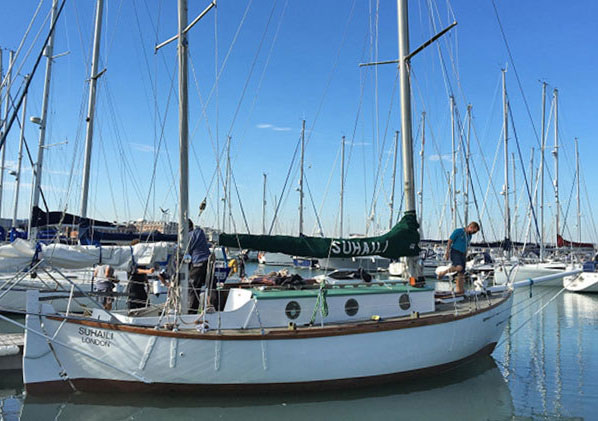
Thanks to Gordie Nash for sharing this quiz with our readers.

